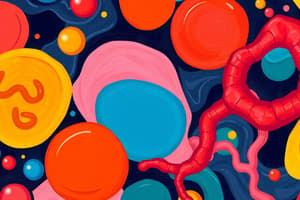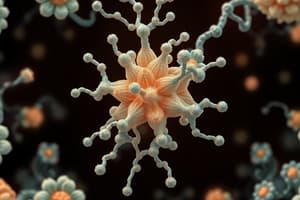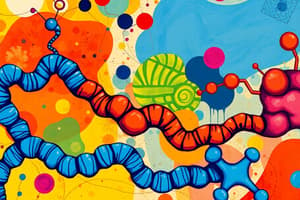Podcast
Questions and Answers
What are the different types of macromolecules?
What are the different types of macromolecules?
- Carbohydrates, lipids, proteins, and nucleic acids (correct)
- Carbohydrates, lipids, vitamins, and minerals
- Carbohydrates, nucleic acids, vitamins, and minerals
- Carbohydrates, proteins, vitamins, and minerals
How do we get the building blocks of macromolecules in our bodies?
How do we get the building blocks of macromolecules in our bodies?
- Through sunlight exposure
- Through breathing
- Through skin absorption
- Through the food we eat (correct)
What is the maximum number of bonds carbon can form with other atoms?
What is the maximum number of bonds carbon can form with other atoms?
- 4 (correct)
- 3
- 2
- 5
How many types of macromolecules are mentioned in the text?
How many types of macromolecules are mentioned in the text?
What is the main function of nucleic acids in the body?
What is the main function of nucleic acids in the body?
How many bonds can carbon form with other atoms?
How many bonds can carbon form with other atoms?
Flashcards are hidden until you start studying
Study Notes
Macromolecules
- There are four main types of macromolecules: carbohydrates, proteins, lipids, and nucleic acids.
Building Blocks of Macromolecules
- Our bodies get the building blocks of macromolecules from the food we eat, which is broken down into smaller molecules during digestion.
Carbon Bonds
- Carbon can form a maximum of four bonds with other atoms.
Types of Macromolecules
- The text mentions four types of macromolecules: carbohydrates, proteins, lipids, and nucleic acids.
Nucleic Acids
- The main function of nucleic acids in the body is to store and transmit genetic information.
Carbon Bonds (Again)
- Carbon can form up to four bonds with other atoms.
Studying That Suits You
Use AI to generate personalized quizzes and flashcards to suit your learning preferences.



